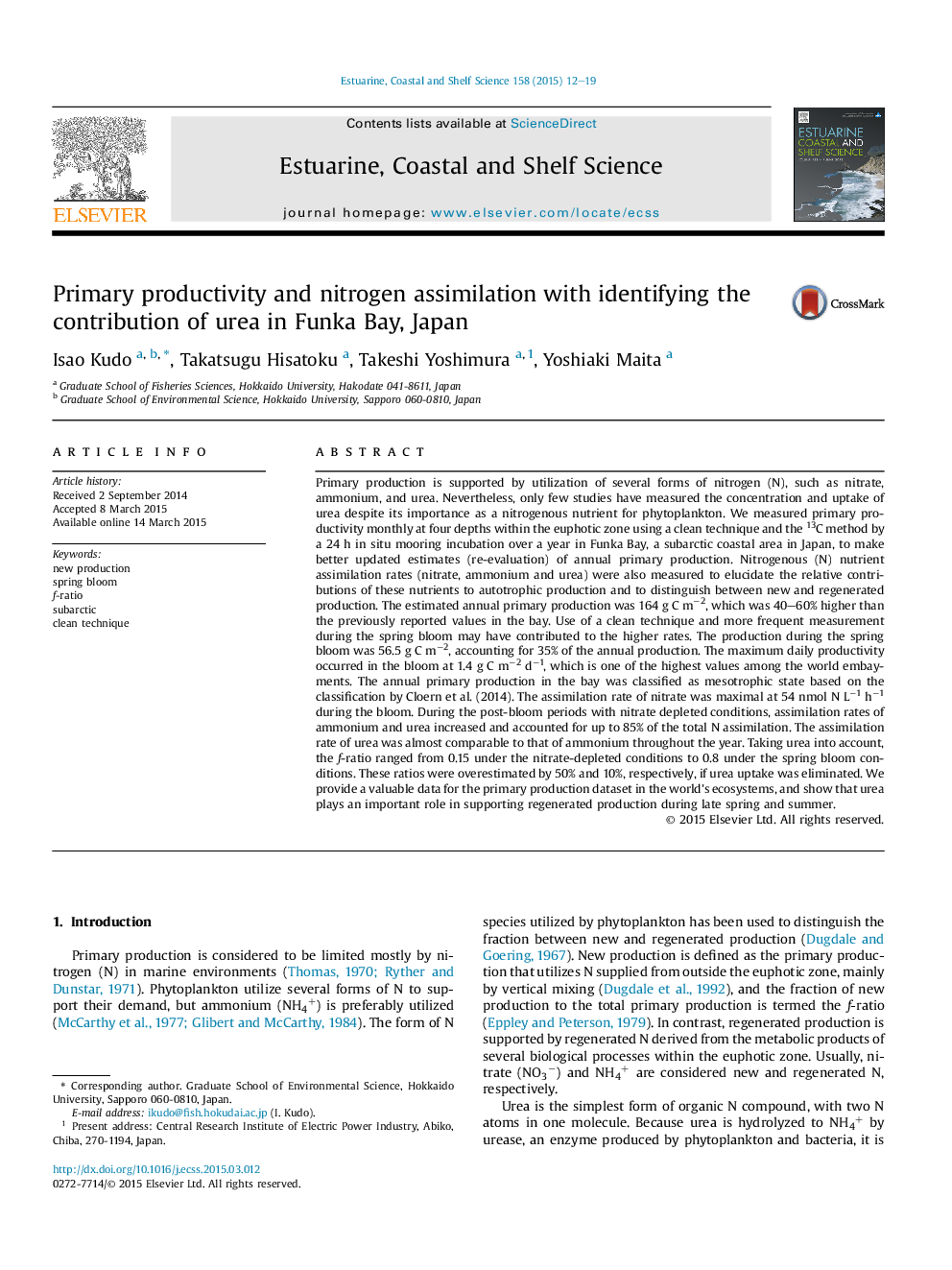| Article ID | Journal | Published Year | Pages | File Type |
|---|---|---|---|---|
| 4539497 | Estuarine, Coastal and Shelf Science | 2015 | 8 Pages |
Abstract
Primary production is supported by utilization of several forms of nitrogen (N), such as nitrate, ammonium, and urea. Nevertheless, only few studies have measured the concentration and uptake of urea despite its importance as a nitrogenous nutrient for phytoplankton. We measured primary productivity monthly at four depths within the euphotic zone using a clean technique and the 13C method by a 24 h in situ mooring incubation over a year in Funka Bay, a subarctic coastal area in Japan, to make better updated estimates (re-evaluation) of annual primary production. Nitrogenous (N) nutrient assimilation rates (nitrate, ammonium and urea) were also measured to elucidate the relative contributions of these nutrients to autotrophic production and to distinguish between new and regenerated production. The estimated annual primary production was 164 g C mâ2, which was 40-60% higher than the previously reported values in the bay. Use of a clean technique and more frequent measurement during the spring bloom may have contributed to the higher rates. The production during the spring bloom was 56.5 g C mâ2, accounting for 35% of the annual production. The maximum daily productivity occurred in the bloom at 1.4 g C mâ2 dâ1, which is one of the highest values among the world embayments. The annual primary production in the bay was classified as mesotrophic state based on the classification by Cloern et al. (2014). The assimilation rate of nitrate was maximal at 54 nmol N Lâ1 hâ1 during the bloom. During the post-bloom periods with nitrate depleted conditions, assimilation rates of ammonium and urea increased and accounted for up to 85% of the total N assimilation. The assimilation rate of urea was almost comparable to that of ammonium throughout the year. Taking urea into account, the f-ratio ranged from 0.15 under the nitrate-depleted conditions to 0.8 under the spring bloom conditions. These ratios were overestimated by 50% and 10%, respectively, if urea uptake was eliminated. We provide a valuable data for the primary production dataset in the world's ecosystems, and show that urea plays an important role in supporting regenerated production during late spring and summer.
Related Topics
Physical Sciences and Engineering
Earth and Planetary Sciences
Geology
Authors
Isao Kudo, Takatsugu Hisatoku, Takeshi Yoshimura, Yoshiaki Maita,
